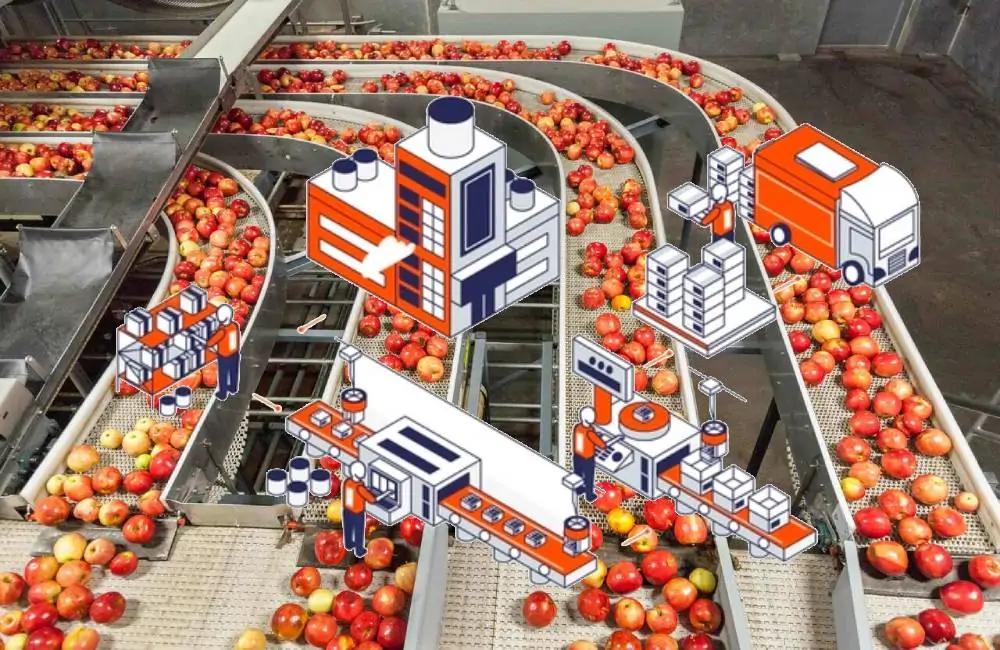Technology impacts the food industry as a whole, from production to delivery. The competitiveness of the companies operating in the food sector is strongly related to their capacity to adopt new technology. Technology is not usually the first thing that springs to mind when it comes to eating. But technology has evolved throughout the years, from how we manufacture and locate our food using apps, robots, data, and processing technologies.
According to a new study from ING, technology enables food producers to produce for a rising global population more effectively. At present, there are 7.5 billion people in the globe and that implies that food consumption is increasing each year. It can enhance food safety and shelf life by utilizing tech to improve processing and packaging.
Robotics
Robots symbolize greater manufacturing process automation. Robotics in the food sector is on the rise. Technological developments, for instance, image recognition and gripper technology have surmounted obstacles, enabling robots to manage delicate and varied goods increasingly, meeting with stringent food safety standards, etc.
The adoption of machines also guarantees quality and cost in the food sector. It reduces the expenses of keeping food fresh and improves production by utilizing the equipment. The combination of growing labor costs and personnel shortages is a key driving factor for the expanding usage of robots. Robotics improves the productivity of businesses and decreases their labor-related reliance.
Moreover, food safety standards have become increasingly rigorous, and human involvement in the manufacturing process may decrease the danger of contamination. Robotic robots may assist reduce safety problems for more hazardous food sector occupations. For example: In 2016, a tech firm developed butcher software so that they can avoid a lot of work injuries by utilizing robots to chop the harder meat. This is one of the numerous ways in which technology may enhance the industry.
Food Processing Software
For many years, food hygiene has been one of the highest concerns for food producers and consumers. Smart food safety technology enables plant and production managers to do so faster and more accurately to avoid risk and costs from recalling a product while maintaining regulatory compliance with corporate standards.
Pathogenic microorganisms such as E Coli, for example, contaminate raw food components via contact with animal faces that contain germs. With an efficient MES to monitor and analyze genealogical components accurately and in real-time, production managers are alerted and can rapidly determine which batch had the germs and then work back along the chain.
The ERP system connects everything: employees, IT systems, equipment, sensors, suppliers, and customers. The requirement is that the system is particularly developed for food production requirements.
In addition, to provide optimal support for conventional activities such as the management of cost and recipes, sales and production planning, machinery may be linked up, the administration of systems, and the efficient coordination of information flow across all human and technical players.
3-D Printing
In recent years, 3D printing has indeed taken off in several sectors and is one of them in the food business. Several uses have been made for NASA 3D printing pizza to produce soft food for people who are unable to chew hard meals to eat. It is opening the door to innovation.
The processing of industrial images is a significant technology. It provides significant efficiency improvements in quantitative measurement of organized events wherever the human eye exceeds its limitations. In terms of quality verification, industrial image processing also increases process efficiency and data processing quality.
Automation
Manufacturing and logistics automation offers food manufacturers many possibilities for better operation. A homogeneous IT infrastructure, smart data management, and a smart workflow are needed to properly manage, monitor, optimize and automate all processes. Whether it’s fully automated production lines, semi-automated picking systems, or robot-controlled shipping systems: numerous cases now show how automated processes operate. Newer systems provide more flexibility and expense management.
Real-time Apps
To be informed, you must have decision-relevant knowledge. As a result, decentralized information distribution becomes a key element in food production success. Web and cloud-based applications keep track of and manage the whole manufacturing process. This generates important information where added value occurs or where employees need it, such as in the incoming goods department, in production, during order picking, at the customer’s office – or comfortably on a couch at home.
Conclusion
Now is the time to begin the digital transition successfully, it is best to focus on proven real-life situations and standards. The most essential thing is to learn step by step how to master the increased complexity while focusing on excellent practices. Then improvements may be made rapidly and without significant risk in manufacturing or logistic operations.
